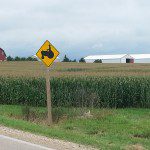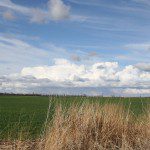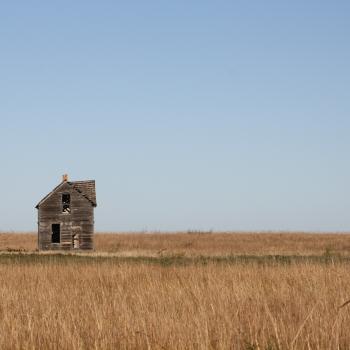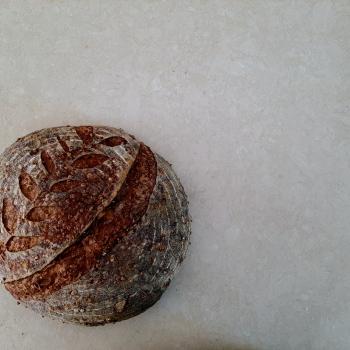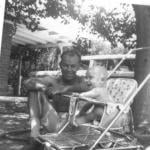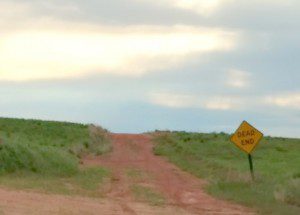
There’s a fork in a country road about an hour from our house. One way curves down to church camp. The other arches over a little rise. But who knows what’s on the other side of that rise? You see, the road is marked by a dead end sign. I’ve never taken that path, but I have wondered what the road was made for. It must go somewhere: a wheat field, an old farmhouse, if nothing else: the horizon.
Do we know a dead end when we see it? In life, they mostly don’t come with signs. Some dead ends are easier to spot than others: the soul sapping work, the class we aren’t grasping, the relationship we should never have gotten into. But so many other paths in life just don’t give off that dead end vibe. We don’t know it’s a dead end until we reach the end, and it’s dead. There’s no sign.
I can’t look at anything anymore without it becoming a parable. I wonder if we really know dead ends when we see them. What is a dead end, anyway? Doesn’t the very idea of a dead end belie some notion that life is a game that you win or lose, as if someone were keeping score, as if by taking a dead end we have played the wrong cards or made a bad move? You lose.
One of the challenges many rural communities face in our current cultural moment is the notion that “rural” equates “dead end.” If you’re an ambitious dreamer–and especially if you’re young–then, according to our society’s prevailing narrative, the best thing you can do for yourself is hit the road and keep going until you arrive in the city, or a least the suburb. That’s where the action is.
But I’m convinced that it’s time to rehabilitate our conception of rural life. I think it’s time to rekindle a hearty love for rural. At a minimum, we would do well not to damage the great progress that has been made in rural areas by cutting federal funds for rural development–something the President’s current budget proposal threatens to do. But more than that, I’m convinced it’s time to encourage people, including our best and brightest young people, to see rural places not as stepping stones or dead ends, but as places open to the goodness and grace of God, places worthy of our fullest love and respect.
We need to cultivate a renewed sense that rural matters, that life in the sticks can be rich and full and authentic–if in a different way than in the cities or suburbs. I think that for some of us, this will mean choosing to make our lives at the new margins of our suburbanizing age: the “flyover territory,” the boondocks, the rural communities. It will mean challenging the notion that the path to rural is a path to nowhere: a dead end.
But really, what I’m getting at is bigger than taking rural seriously. It’s more about how we approach life. What does a faithful life path look like? You see, following Jesus doesn’t mean making all the winning decisions and avoiding dead ends. Sometimes we need the dead ends, the unpaved roads, the backcountry. And sometimes, those places need us.



